Address
304 North Cardinal
St. Dorchester Center, MA 02124
Work Hours
Monday to Friday: 7AM - 7PM
Weekend: 10AM - 5PM
Address
304 North Cardinal
St. Dorchester Center, MA 02124
Work Hours
Monday to Friday: 7AM - 7PM
Weekend: 10AM - 5PM
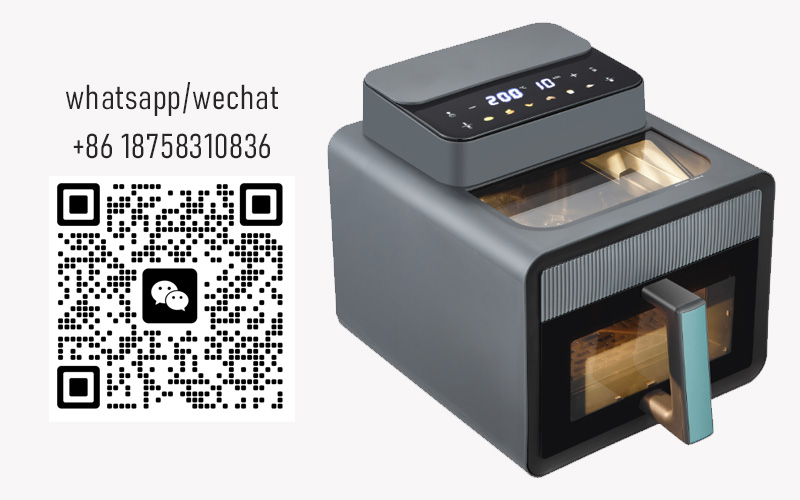
In the world of grill manufacturing, the art of creating high-quality, innovative products hinges on the precision and creativity of in-house mold making. This process isn’t just about producing parts; it’s about shaping the future of grilling with precision and efficiency. As we delve into the intricacies of custom molds, it becomes clear that they are more than just tools; they are the architects of superior grill designs. The journey from concept to consumer-ready product is one that requires a blend of advanced technology, market-savvy design, and a commitment to sustainability. In this exploration, we’ll uncover the advantages that in-house mold production brings to the grill manufacturing industry.
Innovative in-house mold making has emerged as a cornerstone in the creation of high-quality grill products. This approach, which involves designing and manufacturing molds internally, has revolutionized the kitchen appliance industry, particularly for grills. The meticulous craftsmanship and precision that in-house mold making brings to the table have set new standards for excellence in grill design and functionality.
Grill manufacturers understand that the quality of the grill often hinges on the quality of its molds. These molds are the masterpieces that shape the grill’s components, ensuring that each part fits perfectly and functions seamlessly. By investing in in-house mold making, companies can maintain strict control over the manufacturing process, from the initial design to the final product.
The process begins with innovative design software that allows engineers to visualize and create intricate mold shapes. This software is not just about creating a mold; it’s about crafting a mold that will produce a grill with superior performance and aesthetics. The ability to fine-tune these designs before production even starts is a game-changer for grill manufacturers.
Once the design is finalized, the mold-making team takes over. They work with advanced materials that can withstand the intense temperatures and pressures of the manufacturing process. These materials are chosen for their durability and the ability to maintain their shape over time, ensuring that the grill’s components will not degrade or warp.
One of the key advantages of in-house mold making is the level of customization it allows. Each grill design can be tailored to specific market needs, whether it’s a sleek, modern design for urban kitchens or a rugged, outdoor-friendly model for camping enthusiasts. This flexibility is something that external mold suppliers might not be able to offer to the same degree.
The precision of in-house molds also translates into better fitting parts. This not only improves the overall look of the grill but also ensures that the grill’s parts are more likely to last longer. The tighter tolerances mean fewer gaps and leaks, which is crucial for maintaining the integrity of the cooking process.
In addition to customization and precision, in-house mold making can significantly reduce lead times. When a manufacturer relies on external mold suppliers, there’s often a delay in communication and production. By keeping mold making in-house, companies can respond more quickly to design changes and market demands.
Quality control is another area where in-house mold making shines. When the same team designs, creates, and maintains the molds, they have a vested interest in the quality of the final product. This internal oversight can lead to fewer defects and a higher percentage of first-pass parts, reducing waste and the need for rework.
Case studies of grill manufacturers that have adopted in-house mold making demonstrate the tangible benefits. One such company saw a dramatic improvement in the quality of their grill’s cooking surface after switching to in-house molds. The new design allowed for better heat distribution, resulting in more consistent and delicious results.
Advanced technology plays a pivotal role in in-house mold making. The use of 3D printing and computer-aided design (CAD) has allowed for the creation of molds that were once impossible to produce. These technologies have not only increased the complexity of the molds but also their efficiency, leading to faster production times and lower costs.
Navigating the market with cutting-edge grill designs is essential for standing out in a crowded industry. In-house mold making allows grill manufacturers to push the boundaries of what’s possible, offering unique features and innovations that consumers can’t find elsewhere. This competitive edge is a powerful tool for attracting new customers and retaining loyal ones.
In conclusion, the secret to high-quality grill products lies in the innovative approach of in-house mold making. It’s a testament to the power of precision, customization, and control over the manufacturing process. By investing in this strategic advantage, grill manufacturers can deliver products that not only meet but exceed customer expectations, setting the stage for continued success in the kitchen appliance market.

Custom molds play a pivotal role in the kitchen appliance industry, serving as the backbone for creating products that meet both aesthetic and functional standards. Here’s a deeper look into why these molds are so crucial:
In the intricate world of kitchen appliances, the design and functionality of a product are often dictated by the molds used to shape them. Whether it’s a sleek stove, a powerful oven, or a modern refrigerator, the mold is the first step in turning raw materials into a finished, usable product.
The precision and quality of a custom mold directly influence the final outcome of the kitchen appliance. A well-crafted mold ensures that the appliance will fit together seamlessly, operate efficiently, and maintain its structural integrity over time. This level of detail is especially important in the high-stakes kitchen appliance market, where durability and reliability are paramount.
Custom molds also allow for the creation of unique designs that set a brand apart in a crowded marketplace. The ability to mold intricate shapes, textures, and contours gives manufacturers the creative freedom to innovate and appeal to consumers who are looking for something distinctive and high-end.
The cost-effectiveness of custom molds cannot be overstated. While the initial investment in creating a custom mold can be significant, the long-term benefits are substantial. Once the mold is produced, it can be used repeatedly to produce numerous units, reducing the cost per item. This scalability is a game-changer for businesses looking to keep their production costs down without compromising on quality.
In the kitchen appliance industry, compliance with safety standards is non-negotiable. Custom molds enable manufacturers to design appliances that are not only visually appealing but also safe to use. The precise engineering that goes into mold making ensures that the appliances are free from defects that could lead to accidents or malfunctions.
The environmental impact of manufacturing processes is a growing concern. Custom molds can be designed with sustainability in mind, allowing for the use of recycled materials and reducing waste during production. This eco-friendly approach not only appeals to environmentally conscious consumers but also helps manufacturers to contribute positively to the planet.
Innovation in the kitchen appliance industry is driven by the ability to integrate new technologies and features into appliances. Custom molds are instrumental in adapting these advancements, be it smart interfaces, energy-efficient components, or advanced cooking mechanisms. They provide the necessary flexibility to incorporate these innovations without compromising on the appliance’s design or performance.
The process of creating custom molds involves a deep understanding of the material properties and the manufacturing process. This expertise ensures that the molds are not only durable but also capable of withstanding the high temperatures and pressures involved in the molding process. The longevity of these molds means that they can be used for multiple product cycles, maintaining consistent quality over time.
Custom molds also facilitate the production of prototypes, which are essential for testing and refining new designs. The ability to quickly produce prototypes allows for a faster development cycle, helping manufacturers bring new products to market more rapidly.
Lastly, the use of custom molds in the kitchen appliance industry fosters a culture of quality and craftsmanship. When each appliance is meticulously crafted from a high-quality mold, it sends a message to consumers about the brand’s commitment to excellence. This perception of quality can significantly impact consumer trust and loyalty.
In conclusion, custom molds are indispensable in the kitchen appliance industry. They drive innovation, ensure product quality, and contribute to the overall success of a brand. From the design phase to the final product, these molds are the silent heroes that make it all possible.
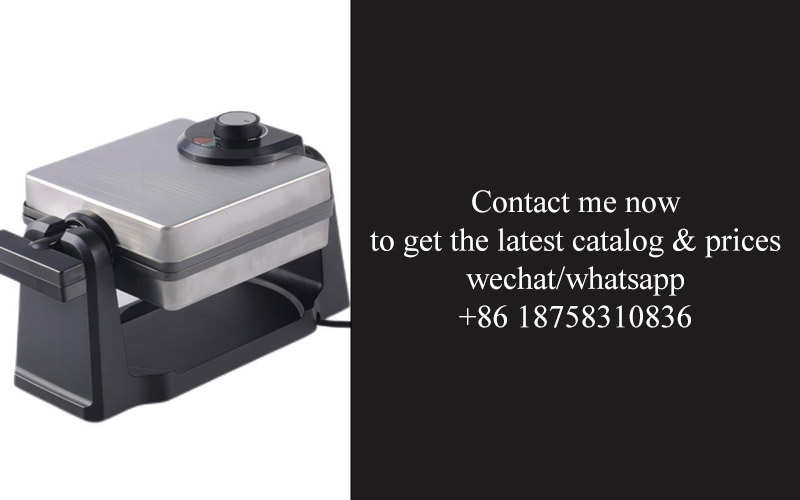
In-house mold making has become a cornerstone in the kitchen appliance industry, particularly for companies aiming to innovate and stay ahead of the curve. This practice not only ensures high-quality products but also significantly enhances the product development process. Let’s delve into how this approach is reshaping the landscape of kitchen appliance manufacturing.
The agility of in-house mold making allows for rapid prototyping. With the ability to create custom molds on-site, companies can quickly iterate designs, making adjustments based on feedback or new insights. This agility translates to shorter product development cycles, enabling brands to bring new grill products to market faster than their competitors.
Custom molds facilitate a deeper level of design integration. When a manufacturer has control over the mold-making process, they can tailor the molds to specific design requirements. This level of customization ensures that the grill’s aesthetics, functionality, and user experience are seamlessly integrated, leading to a product that is not just aesthetically pleasing but also highly functional.
The quality control aspect of in-house mold making cannot be overstated. With an in-house team managing the mold-making process, there is a direct line of accountability for the quality of the molds. This direct oversight helps in identifying and correcting issues early in the production cycle, leading to a higher overall quality of the final product.
Innovation is fostered when companies have the capability to create custom molds in-house. The ability to experiment with different materials, shapes, and sizes encourages creativity and pushes the boundaries of what is possible. This innovation isn’t just about creating unique grill designs; it’s also about developing new features that can revolutionize the way consumers use and interact with their kitchen appliances.
Cost savings can be a significant benefit of in-house mold making. While the initial investment in mold-making equipment can be substantial, over time, it can lead to reduced costs. By eliminating the need for external mold suppliers, companies can avoid the markups that often accompany outsourcing. Additionally, the ability to repair or modify molds on-site can prevent costly delays and expedite the production process.
In the kitchen appliance industry, particularly for grills, precision is key. In-house mold making ensures that the parts are made to exact specifications, reducing the need for additional finishing processes. This precision not only improves the final product’s quality but also reduces the amount of waste generated during manufacturing.
The flexibility of in-house mold making is another advantage. Whether a company is scaling up production or introducing a limited edition product, having the capability to create custom molds allows for the flexibility to produce parts in varying quantities. This adaptability is crucial for meeting the diverse demands of the market.
Collaboration between design teams and mold makers is streamlined when the mold-making process is in-house. This close collaboration ensures that the design intent is accurately translated into the mold, leading to a more cohesive end product. The design team can provide real-time feedback to the mold makers, which can be immediately incorporated into the mold design, resulting in a product that meets the exact specifications from the outset.
The competitive edge that in-house mold making provides is invaluable. In a market where differentiation is key, the ability to offer unique features and superior quality sets a company apart from its competitors. This edge can be a deciding factor for consumers looking for the best grill on the market.
Lastly, in-house mold making can lead to a more sustainable production process. By reducing the reliance on external suppliers and minimizing transportation of molds, companies can reduce their carbon footprint. This commitment to sustainability is not only beneficial for the environment but also aligns with the growing consumer preference for eco-friendly products.
In summary, in-house mold making is a strategic advantage in the kitchen appliance industry, particularly for grill manufacturers. It enhances product development through rapid prototyping, design integration, and quality control, fosters innovation, offers cost savings, ensures precision, provides flexibility, encourages collaboration, provides a competitive edge, and contributes to a more sustainable manufacturing process.
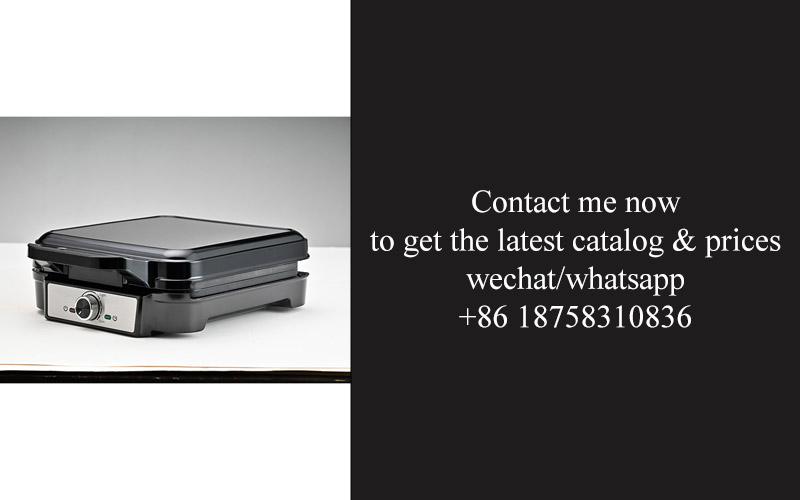
In-house mold making has become a cornerstone in the grill manufacturing industry, offering a plethora of benefits that can significantly enhance the product development process. Here’s how it contributes to the growth and success of grill manufacturers:
Mold making allows for rapid prototyping and customization, which is crucial in the dynamic grill market. The ability to create custom molds quickly means that manufacturers can respond swiftly to consumer demands and market trends, ensuring that their products are always at the forefront of innovation.
Custom molds can be tailored to exact specifications, ensuring that every grill component fits perfectly. This precision reduces the likelihood of defects and enhances the overall quality of the final product. A grill with seamless and well-fitted parts not only looks more appealing but also performs better, leading to higher customer satisfaction.
The in-house mold making process reduces dependency on external suppliers. This autonomy means that grill manufacturers can maintain control over the quality and lead times of their components. By not having to wait for molds to be produced by third parties, companies can streamline their production schedules and reduce the risk of delays.
The cost-effectiveness of in-house mold making cannot be overstated. While the initial investment in mold-making equipment might be significant, the long-term savings from reduced material waste, improved efficiency, and the elimination of third-party fees can be substantial. This allows manufacturers to invest more in research and development, further enhancing their product line.
Custom molds enable grill manufacturers to experiment with new designs and materials. The flexibility to create prototypes with different features and aesthetics means that companies can push the boundaries of what’s possible in grill design. This not only attracts customers but also positions the manufacturer as an industry leader in innovation.
Consistency is key in the grill industry, and in-house mold making ensures it. By controlling the mold-making process, manufacturers can guarantee that every batch of grill parts will be uniform in quality and design. This consistency extends to the assembly line, where workers can rely on the accuracy of the molds to produce high-quality grills with minimal defects.
The ability to make changes to molds on the fly is a game-changer for product development. If a design flaw is identified or a new feature is requested, the in-house team can modify the mold without the need for external intervention. This agility means that grill manufacturers can iterate on their products much faster, keeping them competitive in a fast-paced market.
Quality control is greatly improved with in-house mold making. Since the molds are produced and maintained within the same facility, there is a direct line of accountability. This direct oversight allows for more rigorous testing and ensures that only the highest quality molds are used in the production process.
The use of in-house mold making also fosters a culture of innovation and continuous improvement within the company. Employees are more likely to experiment with new ideas and materials when they know that the mold-making capabilities are readily available. This internal culture can lead to groundbreaking advancements in grill design and functionality.
Lastly, in-house mold making can be a powerful differentiator in the marketplace. With the ability to create unique and specialized grill components, manufacturers can offer products that stand out from the competition. This can be a significant selling point for consumers looking for something that sets their grill apart from the rest.
In conclusion, the benefits of utilizing in-house mold making for grill manufacturing are multifaceted. From enhancing product development speed and quality to fostering a culture of innovation and reducing costs, the advantages are clear. As the grill industry continues to evolve, those who embrace in-house mold making will likely find themselves at the forefront of the market.

In the competitive landscape of grill manufacturing, the creation of innovative and high-quality products often hinges on the use of custom molds. These molds are not just tools; they are the heart of product development, allowing manufacturers to push the boundaries of design and functionality. Let’s delve into a few case studies that showcase the success stories of grill products brought to life through the precision and creativity of custom molds.
One such case is the introduction of the EcoGrill, a sleek, eco-friendly grill that became a hit in the market. The custom molds used in its production were designed to incorporate the latest in energy-efficient materials, ensuring that the grill was not only attractive but also environmentally conscious. The intricate details of the mold allowed for a seamless integration of these materials, resulting in a product that was not only durable but also lightweight, making it a favorite among health-conscious consumers.
Another standout example is the SmartGrill, a grill that boasts a range of smart features, including remote temperature control and smart cooking modes. The custom molds for the SmartGrill were crucial in creating the precise fit for its high-tech components. The molds enabled the seamless integration of electronic elements, ensuring that the grill’s design remained sleek and user-friendly while still housing advanced technology.
The design of the CompactGrill, a compact grill perfect for urban apartments or camping trips, is another testament to the power of custom molds. The mold-making process allowed for the creation of a grill that was both small in size and large in functionality. The molds were tailored to produce a grill that could fold down compactly yet expand to cook a full meal, all while maintaining an elegant and modern aesthetic.
In the case of the ProGrill, a high-end model designed for professional chefs and serious grill enthusiasts, the custom molds played a pivotal role. The molds were used to create intricate designs and high-gloss finishes that are often unattainable with standard molds. The precision of these molds enabled the ProGrill to feature a unique flame-tamer system, which was critical to its performance and durability.
The creation of the FamilyGrill, a grill designed to cater to families, also highlights the benefits of custom molds. The molds were utilized to create a modular design that allowed the grill to be easily expanded or reconfigured to suit different family sizes and preferences. This flexibility in design was only possible through the use of custom molds that could handle complex shapes and sizes.
The All-in-OneGrill, a versatile grill that can be used as a traditional grill, a smoker, or an oven, is yet another success story. The custom molds used in its production were instrumental in creating the necessary space for the grill’s multiple cooking functions. The molds were designed to ensure that all components fit perfectly within the grill’s compact structure, without compromising on quality or performance.
The TravelGrill, a portable grill that is a favorite among outdoor enthusiasts, was brought to life through the precision of custom molds. The molds were used to create a grill that was lightweight yet sturdy, with a design that allowed for easy storage and transportation. The mold-making process was key in ensuring that the TravelGrill was not only portable but also had the structural integrity to withstand the rigors of outdoor use.
Each of these case studies demonstrates the pivotal role that custom molds play in grill manufacturing. They are the unsung heroes behind the scenes, enabling manufacturers to turn visions of innovative grills into reality. The ability to tailor molds to specific product needs not only enhances the design and functionality of the grill but also opens up new possibilities for materials and technology integration. In a market where consumers are increasingly looking for unique and high-quality products, the benefits of utilizing in-house mold making are clear: it allows for the creation of exceptional grill products that stand out from the competition and resonate with customers’ desires for both style and substance.
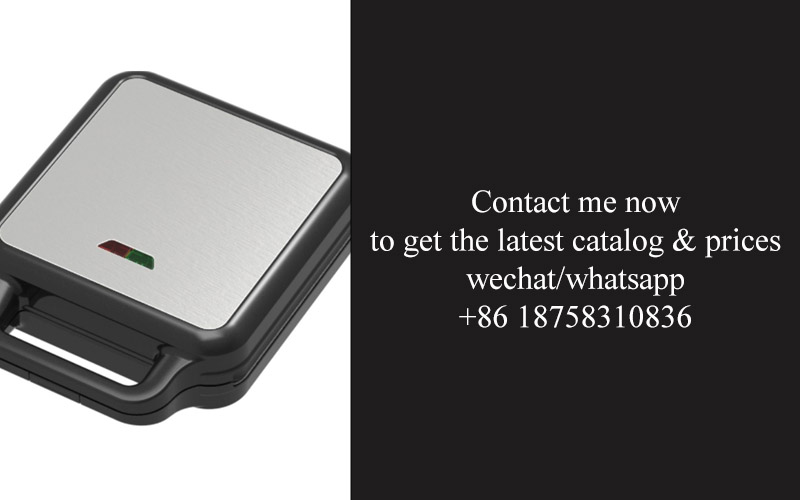
In the realm of in-house mold making, the integration of advanced technology has revolutionized the process, enhancing efficiency, precision, and the overall quality of products. Here’s how technology plays a pivotal role in this field:
The precision of modern CNC (Computer Numerical Control) machines has elevated the art of mold making. These machines allow for intricate designs and complex geometries that were once unattainable, ensuring that every grill component meets exact specifications.
With the advent of 3D scanning and modeling, the creation of molds has become more intuitive and less error-prone. Companies can now take physical objects and convert them into digital models with high accuracy, which directly translates to a more precise mold-making process.
Advanced simulation software is employed to test the durability and performance of molds before they are even manufactured. This predictive analysis helps in identifying potential issues early on, saving time and resources.
Automated and robotic systems have streamlined the mold making process, reducing the need for manual labor and minimizing human error. These systems can work continuously, ensuring a consistent flow of high-quality molds.
The use of advanced materials, such as high-performance alloys and ceramics, has allowed for the creation of molds that can withstand extreme temperatures and pressures, which is crucial in the grill manufacturing process.
The integration of artificial intelligence (AI) and machine learning (ML) into in-house mold making has led to predictive maintenance and optimization. AI algorithms can predict when a machine might fail, allowing for timely maintenance, while ML can optimize the manufacturing process for better results.
Real-time data collection and analysis through IoT (Internet of Things) devices provide insights into the performance of the molds and the production line. This data-driven approach allows for adjustments to be made on the fly, ensuring the highest quality output.
The rise of additive manufacturing, or 3D printing, has opened new doors for in-house mold making. Complex molds that were previously impossible to produce can now be created layer by layer, offering more design flexibility and reducing waste.
Advanced cooling systems are now a standard feature in in-house mold making facilities. These systems ensure that molds maintain optimal temperatures during the manufacturing process, which is essential for maintaining the integrity of the final product.
The development of new software platforms for collaboration has allowed engineers and designers to work together more effectively, regardless of their physical location. This has led to a more streamlined product development process, with faster turnaround times for new grill designs.
The implementation of virtual reality (VR) and augmented reality (AR) technologies has transformed the mold design and testing phases. Designers can visualize and manipulate models in a virtual space, making it easier to identify and correct errors.
The use of laser engraving and marking technologies has improved the traceability and quality control of molds. These methods ensure that each mold can be easily identified and tracked throughout its lifecycle.
Finally, the continuous pursuit of innovation in in-house mold making is driven by the need to stay competitive in a rapidly evolving market. By embracing advanced technology, companies can not only produce high-quality grill products but also do so with greater speed, efficiency, and sustainability.
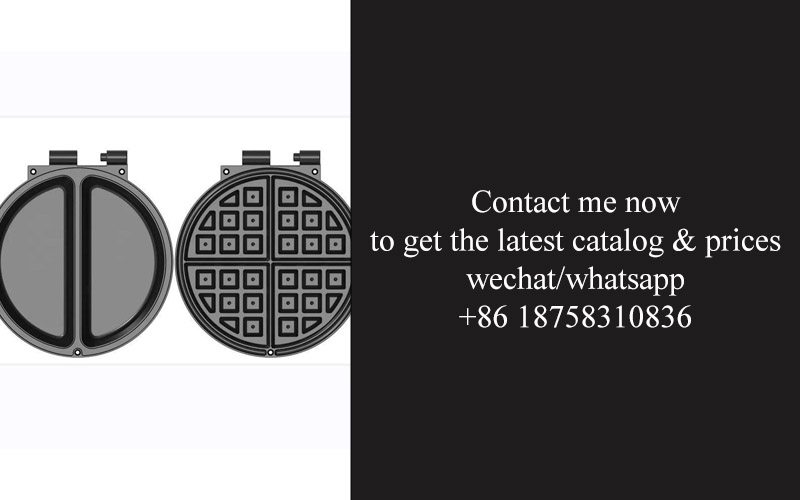
Grill designs have long been a testament to innovation and style in the kitchen appliance industry. Navigating the market with cutting-edge grill designs is not just about aesthetics; it’s about understanding consumer needs, embracing technological advancements, and creating products that stand out in a crowded marketplace.
The evolution of grill designs has been a journey marked by the integration of modern materials, innovative cooking technologies, and smart features that enhance the cooking experience. Let’s delve into how these elements play a role in the market navigation for grill manufacturers.
In recent years, there has been a noticeable shift towards lightweight and durable materials. Grills made from materials like stainless steel, aluminum, and cast iron offer a perfect balance between performance and portability. For instance, a sleek, lightweight grill with a stainless steel body not only looks modern but also ensures even heat distribution and longevity. Such designs appeal to consumers who value both form and function.
The integration of smart technology has revolutionized the grill market. Smart grills with features like temperature control, Bluetooth connectivity, and built-in timers are becoming increasingly popular. These innovations allow users to monitor and adjust the cooking process remotely, which is especially appealing to busy homeowners who want to enjoy a perfectly grilled meal without constant supervision. Navigating the market with such designs requires a keen understanding of consumer convenience and the desire for smart home integration.
Functionality and design often go hand-in-hand in the grill industry. A grill that offers versatile cooking options, such as adjustable burners, side burners, or a rotisserie attachment, is more likely to appeal to a broader audience. For example, a grill with a reversible grate that can cook directly over the flames or indirectly with the lid closed provides a wide range of cooking possibilities. This type of design innovation is crucial for manufacturers looking to stand out in a competitive market.
Another aspect of cutting-edge grill designs is the emphasis on sustainability and environmental consciousness. Manufacturers are increasingly incorporating eco-friendly materials and energy-efficient designs into their grills. A grill made from recycled materials or one that minimizes energy consumption during use can be a strong selling point, especially among environmentally conscious consumers. Navigating the market with such products requires a commitment to sustainable practices and an ability to communicate these values effectively to customers.
The market for grill designs is also influenced by cultural preferences and culinary trends. For instance, the growing popularity of Asian cuisine has led to an increase in grills that cater to specific cooking techniques and ingredients. A grill with a dedicated teppanyaki plate or a multi-functional cooking surface that allows for both direct and indirect cooking can tap into these cultural markets. Understanding and responding to these trends is essential for manufacturers looking to capture a diverse consumer base.
Grill designs must also account for the diverse needs of different users. For families, a grill with ample space for multiple burners and a convenient design for outdoor dining can be a significant draw. For solo cooks or smaller households, a compact, portable grill that can be easily stored might be more appealing. Tailoring designs to these different user profiles helps manufacturers create products that resonate with specific segments of the market.
Lastly, the presentation of grill designs is as important as the design itself. High-quality visuals, engaging marketing campaigns, and user-friendly interfaces on product websites play a crucial role in how consumers perceive a brand and its products. Navigating the market effectively involves creating a strong brand identity and ensuring that the design is not only innovative but also communicates the brand’s values and product benefits clearly.
In conclusion, navigating the grill market with cutting-edge designs involves a multi-faceted approach that encompasses material innovation, smart technology integration, functional versatility, sustainability, cultural sensitivity, user demographics, and effective brand communication. By understanding these elements and incorporating them into their product development and marketing strategies, grill manufacturers can ensure they remain at the forefront of a dynamic and evolving industry.
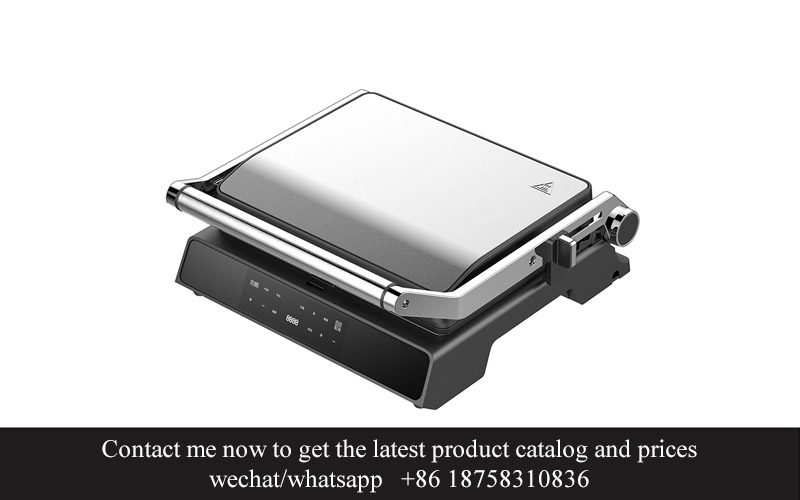
In-house mold production has emerged as a cornerstone in the manufacturing process for grill manufacturers, offering a plethora of advantages that not only enhance the efficiency of operations but also contribute significantly to sustainability efforts. Here’s a closer look at the benefits:
The ability to create custom molds in-house allows for rapid prototyping and customization, which is particularly beneficial in the grill industry. By having direct control over the mold-making process, manufacturers can iterate designs quickly, ensuring that products meet the latest market trends and customer preferences without delay.
Streamlining the supply chain is another advantage of in-house mold production. Traditionally, manufacturers would rely on external suppliers for molds, leading to longer lead times and potential quality control issues. Now, with in-house capabilities, companies can produce molds as needed, reducing wait times and ensuring that the entire production process remains efficient.
Custom molds also enable the creation of intricate and unique grill designs that stand out in a competitive market. The ability to tailor the molds to specific requirements means that manufacturers can develop grill models with unique features, such as innovative heat distribution systems or stylish, ergonomic handles. This level of customization can significantly differentiate a product in the eyes of consumers.
Moreover, in-house mold production supports the development of high-quality grills. With direct oversight, manufacturers can ensure that molds are made to precise specifications, which is crucial for the durability and performance of the final product. The result is a grill that not only looks great but also performs exceptionally well.
Reducing environmental impact is a critical consideration for modern businesses, and in-house mold production can contribute to this goal. By minimizing the need for external suppliers, companies can cut down on transportation-related emissions and waste. Additionally, the ability to create molds on demand reduces the risk of overproduction and excess inventory, which can lead to increased waste.
Energy efficiency is a key factor in sustainable manufacturing practices, and in-house mold making can lead to significant energy savings. With molds created on-site, there’s less need for extensive energy consumption associated with transporting materials to external mold-making facilities. Furthermore, the precision of in-house molds can reduce the amount of raw material required, thereby lowering the energy needed for material processing.
In terms of cost-effectiveness, in-house mold production can be a game-changer. While the initial investment in mold-making equipment may be substantial, the long-term benefits can be substantial. Companies can avoid the high costs associated with outsourcing, including the markup on mold production fees and the potential for unexpected delays. Additionally, the ability to quickly produce new molds in response to market changes can prevent costly retooling and reduce the risk of missing out on new product opportunities.
Another benefit is the level of control in-house mold production offers over intellectual property. By keeping the mold-making process internal, manufacturers can ensure that their unique designs and technologies are not easily copied by competitors. This can be particularly important in a market where innovation is key to success.
Furthermore, in-house mold production fosters a culture of continuous improvement. With the ability to experiment with new designs and materials, manufacturers can drive innovation within their own organization. This not only leads to better products but also enhances the company’s reputation as an industry leader in grill technology.
Lastly, the flexibility of in-house mold production is invaluable. Whether it’s adapting to seasonal demand, creating limited edition products, or responding to customer feedback, the ability to produce molds quickly and efficiently ensures that manufacturers can stay agile and responsive to market needs.
In summary, the advantages of in-house mold production in the grill manufacturing industry are multifaceted. From enhancing product quality and design innovation to reducing environmental impact and fostering a culture of continuous improvement, the benefits are clear. As the industry evolves, the strategic decision to invest in in-house mold making can set companies apart, enabling them to lead the way in sustainability, efficiency, and customer satisfaction.
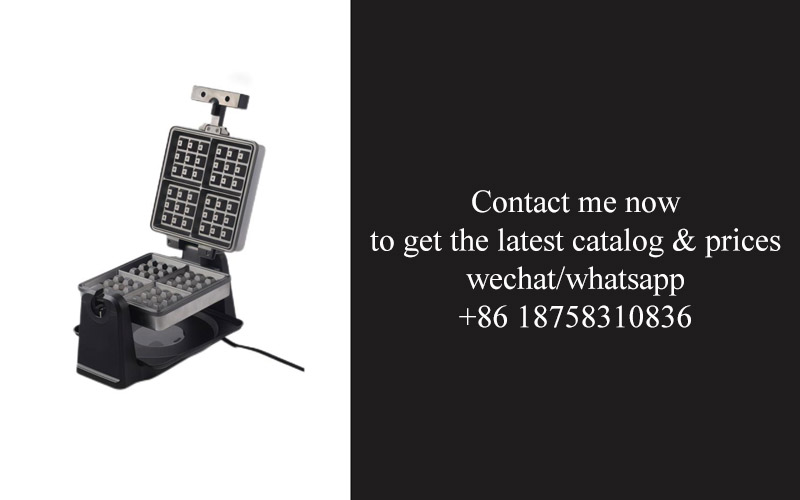
In-house mold making has revolutionized the grill manufacturing industry, offering a multitude of advantages that have redefined the way products are designed, produced, and sold. This approach to mold production has become a cornerstone of success for many grill manufacturers, allowing them to stay ahead of the competition and cater to the evolving demands of consumers. Here’s a deeper look into the transformative impact of in-house mold making on the grill manufacturing process.
Grill manufacturers who invest in in-house mold making enjoy greater control over the design and quality of their products. By eliminating the need for external mold suppliers, they can directly influence the mold-making process, ensuring that every detail aligns with their specific requirements. This level of customization is crucial for creating unique grill designs that stand out in a crowded market.
The agility offered by in-house mold making is another significant benefit. Manufacturers can quickly adapt to market trends and customer feedback by modifying molds without the delays and additional costs associated with sourcing new molds from external suppliers. This flexibility allows for a faster response to the needs of consumers, ensuring that the latest grill models are ready to hit the market promptly.
Quality control is greatly enhanced through in-house mold making. By overseeing the mold-making process from start to finish, manufacturers can ensure that the molds are crafted to the highest standards. This not only results in superior product quality but also reduces the likelihood of defects, minimizing waste and rework. The precision of in-house molds translates into grills that are not only durable but also deliver exceptional performance.
Cost savings are a major advantage of in-house mold making. While the initial investment in mold-making equipment can be substantial, the long-term savings are considerable. By reducing dependency on external mold suppliers, manufacturers can avoid the costs associated with purchasing molds, shipping, and potential delays. Moreover, the ability to make multiple iterations of a mold without external costs allows for continuous improvement and refinement of the design, further reducing costs over time.
The environmental impact of manufacturing is also a critical factor. In-house mold making allows for a more sustainable approach to production. By minimizing transportation and reducing the number of suppliers involved in the supply chain, manufacturers can significantly cut down on carbon emissions. Additionally, having direct control over the production process enables more efficient use of materials, reducing waste and promoting a greener manufacturing footprint.
Innovation thrives in an environment where manufacturers can experiment freely with new designs and materials. In-house mold making facilitates this innovation by providing the tools to create complex and intricate grill shapes that might not be feasible with standard molds. This ability to push the boundaries of design opens up new opportunities for product differentiation and can lead to groundbreaking grill technologies.
Collaboration between design teams and mold makers is pivotal in the in-house mold making process. This close collaboration ensures that the design intent is fully realized in the mold, leading to a seamless transition from concept to final product. The shared knowledge and experience of these teams result in a product that not only looks great but also performs optimally.
Market responsiveness is heightened with in-house mold making. Manufacturers can respond to market demands and customer preferences with greater speed and accuracy. The ability to rapidly produce prototypes and samples means that new features can be tested and validated quickly, allowing for timely product launches and a competitive edge.
The competitive landscape is ever-changing, and in-house mold making equips grill manufacturers with the tools to stay ahead. By having control over the production process, manufacturers can differentiate their products through unique features and superior craftsmanship. This differentiation is essential in a market where consumers have a plethora of options.
As the grill industry continues to evolve, the role of in-house mold making will only become more pronounced. The advantages it brings, from cost savings and sustainability to design innovation and market responsiveness, make it a strategic asset for grill manufacturers looking to thrive in a dynamic market. By embracing in-house mold making, these manufacturers are not just producing grills; they are shaping the future of outdoor cooking.